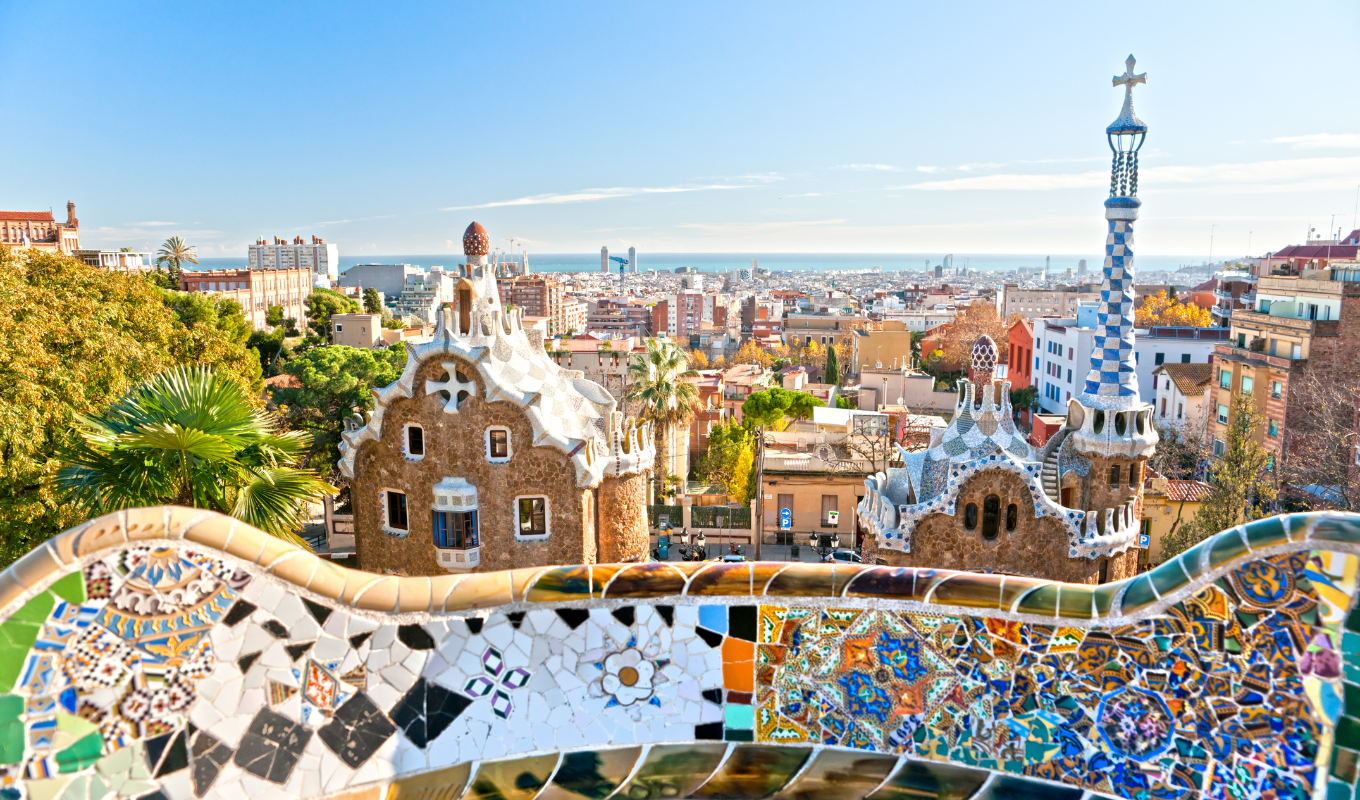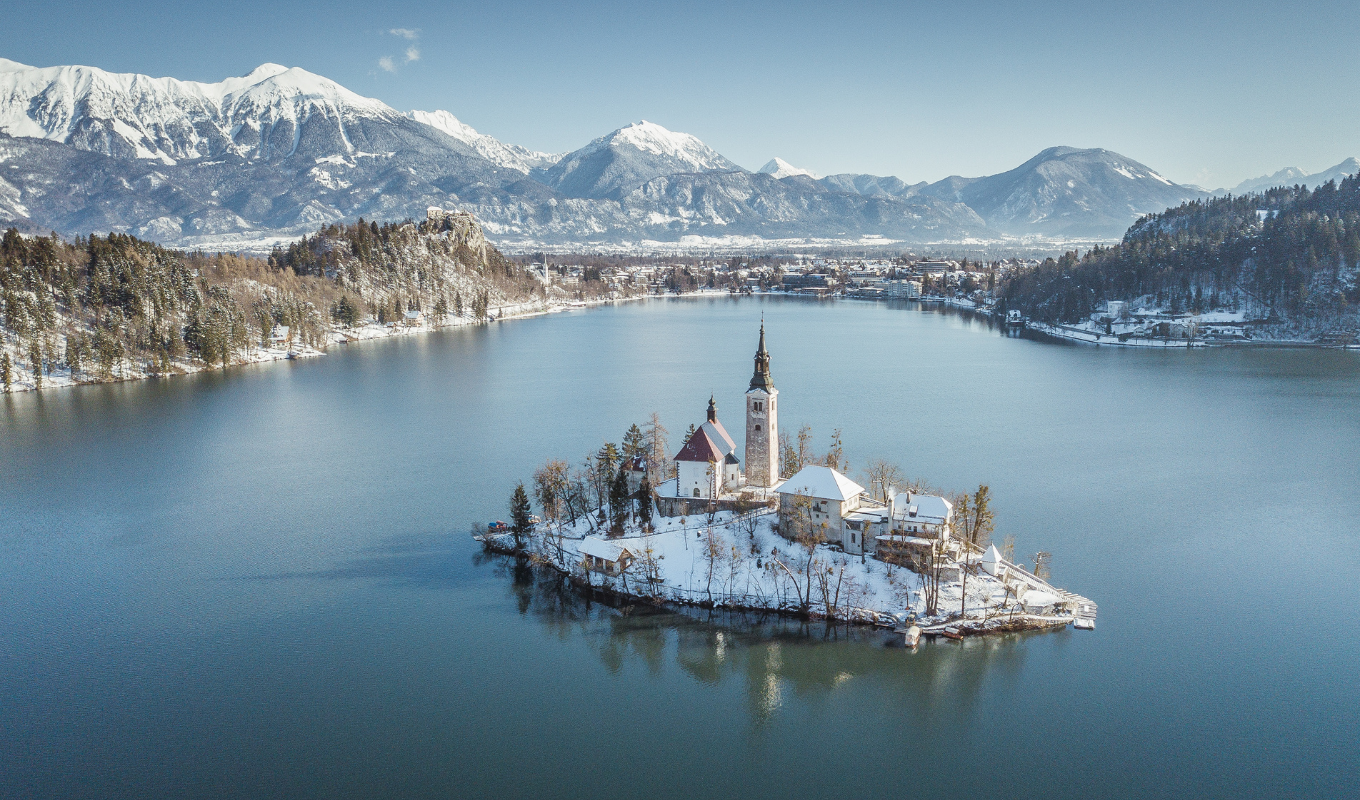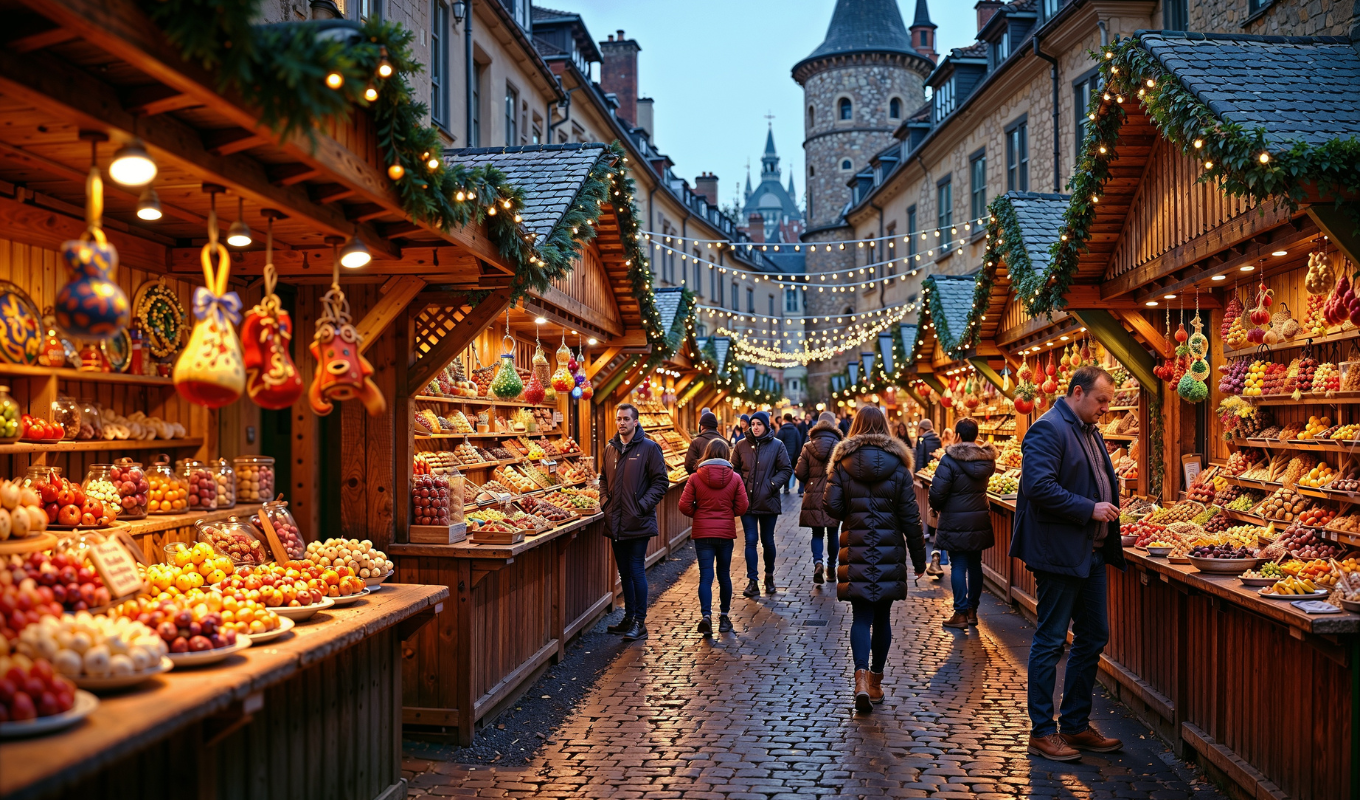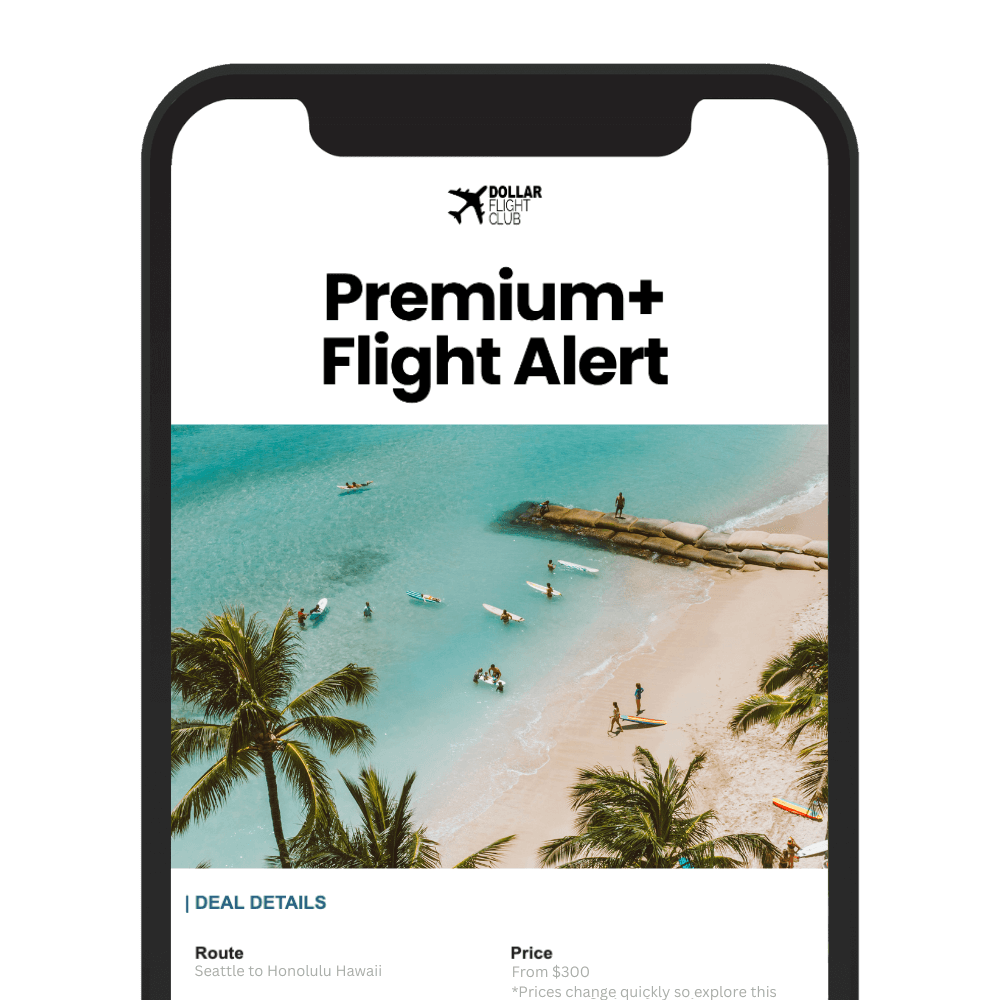Barcelona is a must-visit city blending historic charm with modern attractions. From Gaudí’s architectural masterpieces like the Sagrada Família to vibrant food markets and bustling neighborhoods, this Mediterranean destination offers something for everyone. Here’s a quick overview to help you plan:
- Best Times to Visit:
- Spring (mild weather, fewer crowds)
- Summer (festivals, beach vibes, higher prices)
- Fall (pleasant weather, fewer tourists)
- Winter (quiet, festive atmosphere)
- Top Attractions:
- Gaudí’s works: Sagrada Família, Park Güell, Casa Batlló
- Historic neighborhoods: Gothic Quarter, El Born, Eixample
- Museums: Picasso Museum, Magic Fountain of Montjuïc
- Where to Stay:
- Eixample (central, near landmarks)
- El Born (artsy, nightlife)
- Gràcia (local vibe, family-friendly)
- Poble Sec (budget-friendly, food-focused)
- Food Highlights:
- Must-try dishes: Paella, patatas bravas, crema catalana
- Best spots: El Xampanyet, Bar Cañete, Mercat de la Boqueria
- Getting Around:
- Use the metro, buses, or walk in the compact city center.
- Bike rentals and taxis are also easy options.
Barcelona combines history, art, and cuisine, making it a top choice for any traveler. Whether exploring Gaudí’s landmarks, enjoying Catalan dishes, or strolling through historic streets, the city promises unforgettable experiences.
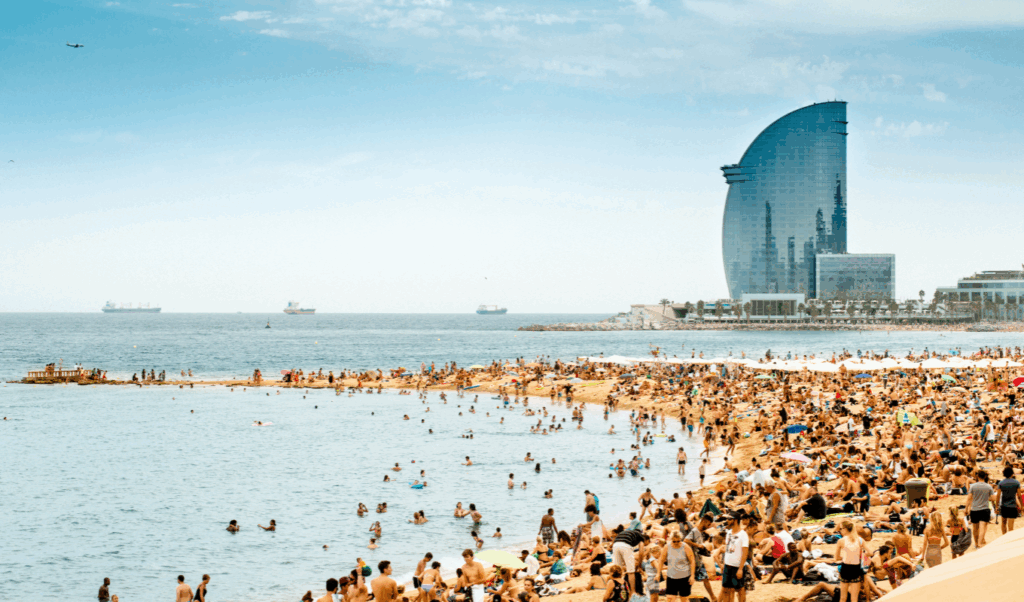
When to Visit and How to Get There
Best Times to Visit
Barcelona’s Mediterranean climate makes it a great destination no matter the time of year, but each season has its own perks depending on what you’re looking for.
Spring (March to May) brings mild temperatures, typically between 60°F and 70°F. Parks like Parc Güell come alive with colorful blooms, and the city’s main attractions are less crowded. It’s also a good time for walking tours and exploring neighborhoods, with hotel rates staying moderate.
Summer (June to August) is when Barcelona is at its liveliest. Temperatures hover in the low to mid-80°F range, the beaches are bustling, and outdoor festivals are in full swing. However, summer also means bigger crowds and higher accommodation prices. If you’re planning to visit popular spots like the Sagrada Familia, booking tickets in advance is a smart move.
Fall (September to November) offers a sweet spot with temperatures ranging from 65°F to 75°F. The crowds thin out, hotel rates drop, and the Mediterranean is still warm enough for early fall swims.
Winter (December to February) is the quietest season, with temperatures around 50°F to 60°F. While some seasonal attractions may have shorter hours, major landmarks are much less crowded. The Gothic Quarter feels especially magical during the holidays, with festive decorations and Christmas markets adding to its charm.
Flying to Barcelona
Once you’ve decided on the best time to visit, the next step is figuring out how to get there. Barcelona-El Prat Airport (BCN) is the primary international hub, located just 9 miles southwest of the city center. With over 50 million passengers passing through annually, the airport offers non-stop flights from major U.S. cities like New York (JFK), Miami, Los Angeles, and Chicago. Airlines such as American, Delta, and Iberia operate these routes, with flight times ranging from 7 to 9 hours.
If you’re looking for more options or cheaper fares, connecting flights through European cities like Madrid, Paris, or Amsterdam are worth considering. These can add 2–4 hours to your journey but often come with significant savings.
The airport has two main terminals: Terminal 1, which handles most international flights, and Terminal 2, which serves mainly European and domestic routes. Getting to the city is easy with the Aerobús express service, which runs every 5 to 10 minutes and costs about $6.
Finding Affordable Flights
If you’re aiming to save on airfare, timing and flexibility are key. Services like Dollar Flight Club can help uncover discounted flights to Barcelona, sometimes slashing prices by up to 90% with their email and SMS alerts.
For summer trips, booking 6 to 8 weeks in advance often yields the best deals, while winter fares might be cheaper closer to your departure date. Flying mid-week, particularly on Tuesdays or Wednesdays, can also lead to lower prices compared to weekend departures.
Being flexible with your travel dates can unlock even more savings. For example, flying just a few days before or after major holidays like Thanksgiving or Christmas could save you anywhere from $100 to $300 per ticket.
Another budget-friendly option is flying into Madrid and taking a high-speed train to Barcelona. The train ride takes about 3 hours, costs between $60 and $80, and offers stunning views of the Spanish countryside along the way.
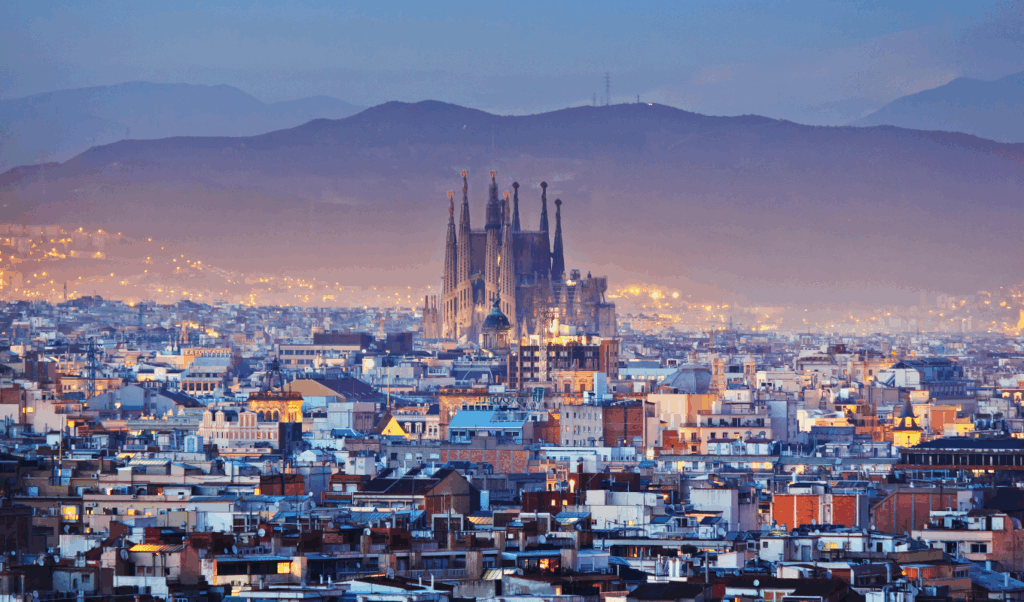
Top Attractions and Experiences
Barcelona is a city where Gothic history meets modernist creativity. From Antoni Gaudí’s extraordinary designs to charming historic neighborhoods, it offers a mix of experiences that reflect the essence of Catalan life. Below, you’ll find highlights of Gaudí’s architectural wonders, historic districts, and the city’s cultural hotspots.
Gaudí’s Architecture
Antoni Gaudí’s work is synonymous with Barcelona, shaping its skyline and captivating visitors with his unique artistic vision.
- The Sagrada Família: This iconic, unfinished basilica is a testament to Barcelona’s inventive spirit. To make the most of your visit, it’s best to book timed tickets online ahead of time.
- Park Güell: Known for its colorful mosaics and stunning views of the city, this park is a vibrant escape. While some areas require a ticket, many pathways are free to explore at your own pace.
- Casa Batlló: Situated on Passeig de Gràcia, this building is celebrated for its whimsical façade and imaginative interiors. Visitors can enjoy interactive guides and a rooftop terrace with breathtaking views.
- La Pedrera (Casa Milà): Famous for its wave-like façade and sculptural rooftop, this masterpiece also offers evening tours, where the illuminated exterior takes on a magical glow.
Historic Neighborhoods
Barcelona’s historic neighborhoods tell stories of its past while embracing its evolving culture, making them perfect for exploration.
- The Gothic Quarter (Barri Gòtic): The heart of old Barcelona, this area is a maze of narrow medieval streets. Highlights include the Barcelona Cathedral and lively plazas that come alive at night with street performances and local charm.
- El Born: Known for its artistic vibe, this neighborhood is filled with boutique shops, art galleries, and cozy tapas bars. It’s also home to the stunning Santa Maria del Mar basilica and the Picasso Museum, making it a cultural gem.
- Eixample: Renowned for its modernist architecture and grid-like streets, this district features Passeig de Gràcia, a boulevard lined with architectural landmarks and luxury shops, embodying a refined elegance.
Museums and Entertainment
Barcelona’s cultural offerings are as diverse as its architecture, with museums and entertainment options showcasing both its history and contemporary flair.
- Picasso Museum: Located in a series of medieval palaces in El Born, this museum houses an extensive collection of Pablo Picasso’s early works, offering a deep dive into his artistic journey.
- Las Ramblas: This bustling pedestrian street is alive with market stalls, outdoor cafés, and street performers. Just steps away, the Boquería Market is the perfect place to savor authentic Catalan cuisine.
- Waterfront Experiences: The revitalized waterfront is ideal for relaxing. Sunset catamaran cruises offer an unforgettable view of the city skyline against the Mediterranean backdrop.
- Flamenco Shows: For an evening of lively music and dance, flamenco performances are a must. One popular venue provides an intimate setting for these passionate displays.
- Magic Fountain of Montjuïc: This free attraction combines water, light, and music into a dazzling choreographed show, capturing the festive energy of Barcelona.
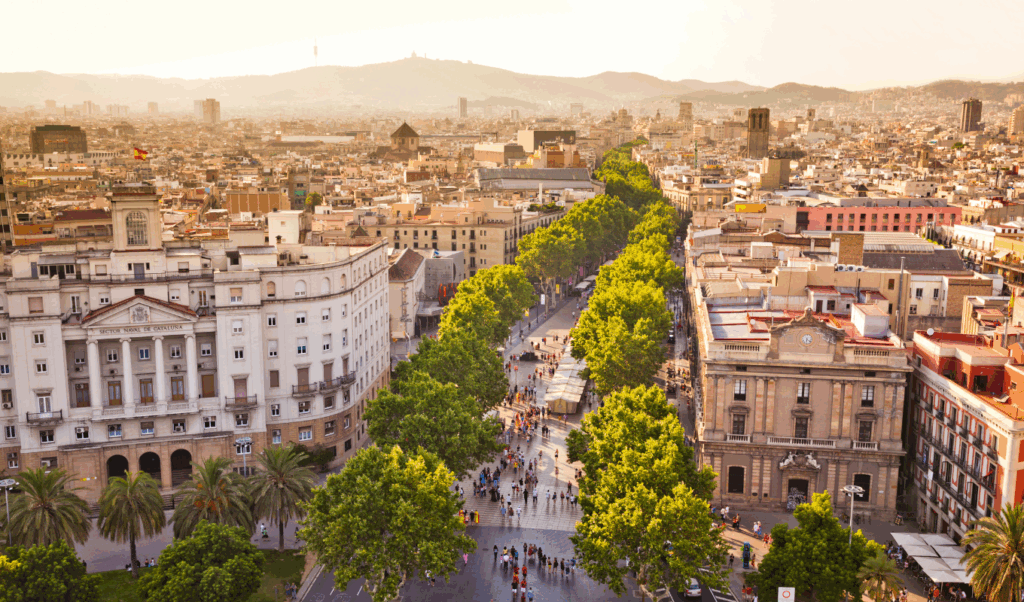
Where to Stay: Lodging Options
Finding the right place to stay in Barcelona is all about balancing your budget with convenience. With 30 million visitors flocking to the city annually, picking the perfect neighborhood and accommodation type can make a big difference in your trip.
Barcelona offers great value for lodging. Mid-range hotels typically cost $90–$200 per night, even during peak travel seasons, making it a reasonably priced destination for many travelers.
Choosing the Right Neighborhood
Each neighborhood in Barcelona has its own vibe and perks, so where you stay depends on your priorities – whether that’s being close to attractions, enjoying nightlife, soaking up the local atmosphere, or sticking to a budget.
Eixample is a favorite for many visitors, especially the Dreta de l’Eixample area. Staying here means you’re just a short walk from iconic landmarks like the Sagrada Família and Casa Batlló. Plus, the excellent metro connections make getting around a breeze. While the area near major sights can get busy, a few blocks away you’ll find quieter streets and a more relaxed feel.
If you’re looking for a mix of medieval charm and modern culture, El Born is a great choice. This neighborhood is close to must-visit spots like the Picasso Museum and Santa Maria del Mar. With its boutique shops and buzzing nightlife, it’s perfect for short stays or those who enjoy a lively evening scene.
For a more laid-back and bohemian experience, Gràcia feels like a small town within the city. It’s ideal for families or travelers planning longer stays of three or more days. While it’s a bit farther from the city center, the metro makes it easy to reach attractions like Park Güell. The area’s independent shops and vibrant squares offer a more local experience.
Travelers on a budget should check out Poble Sec, a lesser-known neighborhood that delivers authentic charm without the tourist prices. It’s a haven for food lovers and provides easy access to Montjuïc’s museums and viewpoints.
Sant Antoni blends traditional character with trendy touches. It’s well-connected by public transit and close enough to walk to major sights, making it a great option for return visitors or those planning slightly longer stays of three to four days.
For a central location, the Gothic Quarter puts you in the heart of the action, surrounded by historic architecture. However, it’s worth noting that the area can be crowded, more expensive, and heavily geared toward tourists, which might not appeal to those seeking a more authentic vibe.
Once you’ve decided on a neighborhood, it’s time to find accommodations that match your travel style.
Hotel Recommendations
Barcelona’s accommodation options range from boutique hotels and luxury stays to budget-friendly choices. Local boutique hotels often provide great value compared to international chains, offering perks like complimentary breakfast or happy hours, along with a more personal touch.
If you’re traveling on a budget, consider hostals. These are not to be confused with hostels – they typically offer private rooms with en-suite bathrooms at a fraction of traditional hotel prices.
Timing your trip wisely can also save you money. Traveling during the off-season, from November to February, can cut hotel costs by 30–50% compared to the summer months. Plus, you’ll enjoy fewer crowds at popular attractions.
For additional savings, take advantage of smart booking strategies. Genius discounts on Booking.com can offer 10–20% off regular rates and include extra perks for frequent users. If you have credit card points or airline miles, Barcelona is a fantastic destination to redeem them, especially when cash prices are high.
Finally, there’s no need to stay within walking distance of every attraction. Barcelona’s excellent public transit system makes it easy to get around. A T-casual Card, which gives you 10 rides for about $13, is a budget-friendly way to explore the city.
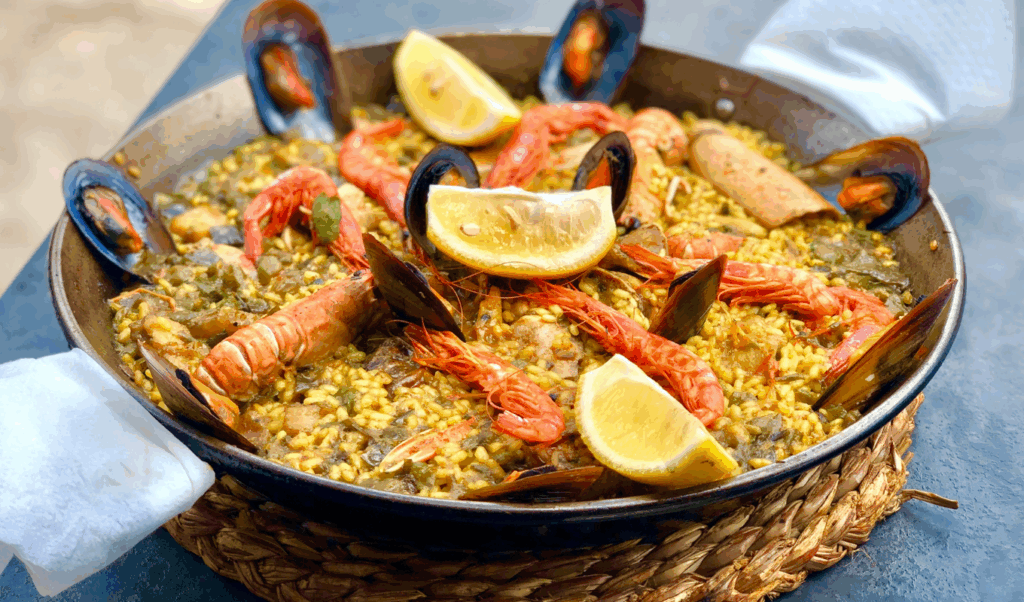
Food and Drink: What and Where to Eat
After soaking in Barcelona’s sights, it’s time to dive into its vibrant food scene. The city offers a mix of traditional Catalan flavors and modern culinary twists. With an emphasis on fresh ingredients, small plates, and the joy of sharing meals, Barcelona’s dining culture ensures every bite is an experience to remember. From bustling food markets to cozy tapas bars, there’s something for every palate and budget.
Keep in mind that mealtimes in Barcelona are later than what you might be used to in the U.S. – lunch is typically enjoyed in the early afternoon, while dinner doesn’t start until late in the evening. Now, let’s explore some of the must-try dishes that define Catalan cuisine.
Must-Try Catalan Dishes
Start with pa amb tomàquet, a simple yet delicious dish of toasted bread rubbed with fresh tomatoes, olive oil, and a sprinkle of salt. Often served as a starter or alongside other dishes, it’s a perfect example of the region’s love for fresh, quality ingredients.
While paella is traditionally associated with Valencia, Barcelona puts its own spin on this iconic dish. Seafood paella, featuring prawns, mussels, and squid, is a popular choice. For an authentic experience, seek out restaurants that focus on traditional cooking methods rather than tourist-centric spots.
Another crowd-pleaser is patatas bravas – crispy fried potatoes topped with a spicy tomato sauce and garlic aioli. This classic tapas dish pairs wonderfully with a cold beer or a glass of vermouth.
If you’re a seafood fan, don’t miss suquet de peix. This hearty fish stew combines white fish, potatoes, and a rich broth, often enhanced with saffron, offering a true taste of the Mediterranean.
For dessert, indulge in crema catalana. Similar to crème brûlée but with a unique flavor profile of lemon zest and cinnamon, it’s a must-try for anyone with a sweet tooth.
To round out your meal, sip on a glass of cava, Catalonia’s signature sparkling wine. Its crisp, bubbly character adds a celebratory touch to any dining experience.
Top Restaurants and Bars
Barcelona’s dining scene is packed with incredible options. Here are a few standout spots:
- El Xampanyet (El Born): Known for its authentic tapas, including anchovies and house cava, this spot is a local favorite.
- Bar Cañete (near Las Ramblas): Offers upscale tapas like jamón ibérico and grilled octopus. The open kitchen lets you watch the chefs in action.
- Cal Pep (El Born): Famous for its counter-dining experience, where you can enjoy a modern twist on Catalan cuisine while interacting with the chef.
- Cervecería Catalana (Eixample): A spacious spot offering a wide range of tapas, from pan con tomate to croquettes.
- La Isabela (Hotel 1898): Perfect for special occasions, this rooftop restaurant combines Mediterranean dishes with stunning views of Barcelona’s skyline.
- Bodega Biarritz 1881 (Gràcia): A family-run gem serving traditional Catalan dishes in a cozy, timeless setting.
Food Markets
Barcelona’s food markets are a feast for the senses, offering everything from fresh produce to prepared meals. Here are a few you shouldn’t miss:
- Mercat de la Boqueria (Las Ramblas): One of the city’s most famous markets, known for its vibrant selection of fresh ingredients and local delicacies. Arrive early to avoid the crowds.
- Mercat de Sant Antoni: A more local market with a laid-back vibe. On weekends, you’ll also find a book and antique market here, adding an extra layer of charm.
- Mercat de Santa Caterina (El Born): Recognizable by its colorful mosaic roof, this market features a variety of prepared food options and an impressive selection of olives.
- Mercat del Ninot (Eixample): Popular with locals, this market is known for its fresh, high-quality ingredients and an outstanding seafood section – perfect if you’re planning to cook.
Some markets, like Mercat de Sant Josep de la Boqueria, transform in the evenings into casual dining hubs. For example, Pinotxo Bar, a beloved spot since 1940, serves simple yet flavorful dishes that capture the essence of Barcelona’s culinary heritage.
Market hours can vary, and many stalls close during the early afternoon. Plan your visit carefully to make the most of these vibrant culinary spaces.
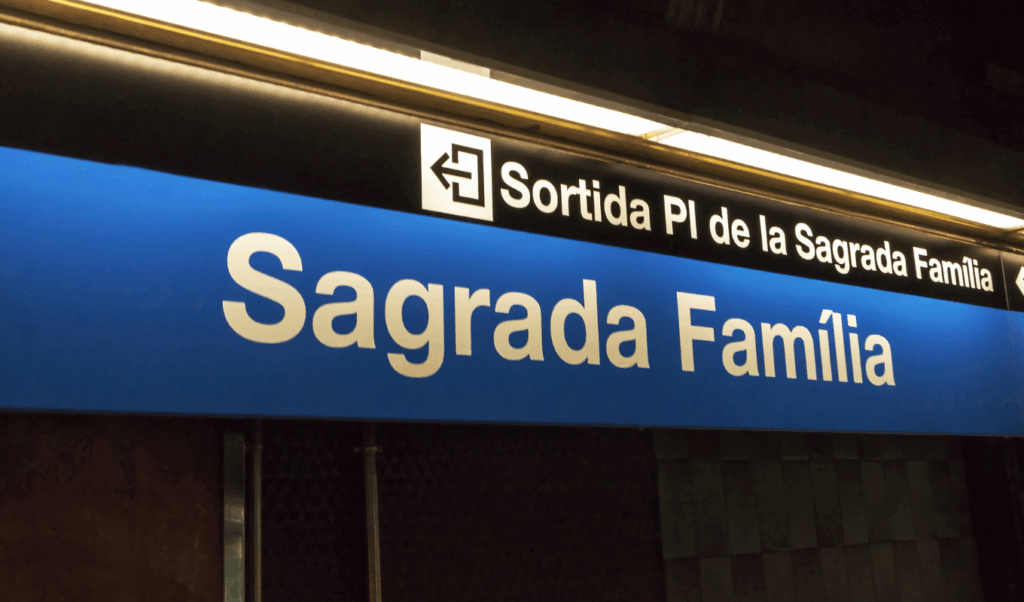
Getting Around Barcelona
Barcelona makes exploring the city simple and enjoyable, thanks to its well-connected transportation system. With a compact city center perfect for walking and an extensive network of public transit, getting around is a breeze. Whether you’re hopping on the metro, taking a scenic bike ride, or catching a bus, there’s an option for every traveler. These choices also make it easy to access the attractions mentioned earlier.
Public Transportation
Barcelona’s public transit is known for being efficient and affordable. The city’s transit authority, TMB, operates the metro, buses, and trams, ensuring seamless connectivity. The metro runs from early morning until late at night, with extended hours on weekends, making it a reliable choice. You can choose from single-ride tickets, multi-trip passes, or travel cards that include unlimited rides and even airport transfers.
For areas not covered by the metro, buses step in to complete the network, including routes along the coastline. If you’re out late, night buses are available after regular services end. To make your journey easier, consider downloading the TMB App for real-time schedules and route planning.
Walking and Cycling
Exploring Barcelona on foot or by bike lets you soak in its rich history and vibrant atmosphere. Walking through the central districts reveals charming plazas and stunning architecture that you might miss otherwise.
Barcelona’s flat terrain and pleasant Mediterranean weather make it ideal for cycling. While the local bike-share program, Bicing, is reserved for residents, visitors can easily rent bikes or join guided bike tours. The city boasts an extensive network of bike lanes, so whether you’re cruising along the waterfront or venturing further out, cycling is a practical and enjoyable way to see the sights.
Rideshare and Taxis
For times when public transit or walking isn’t enough, rideshares and taxis provide convenient alternatives. Rideshare apps offer upfront pricing and secure rides, while taxis are readily available and operate with regulated fares based on distance and time of day. If you’re looking for something different, motorcycle taxis can be a speedy option, especially during heavy traffic.
While many drivers speak basic English, having your destination written in Spanish or Catalan can help avoid confusion. During busy periods or major events, it’s wise to plan ahead, as demand for rides may spike.
With so many transportation options at your fingertips, getting around Barcelona is more than just practical – it’s part of the fun.
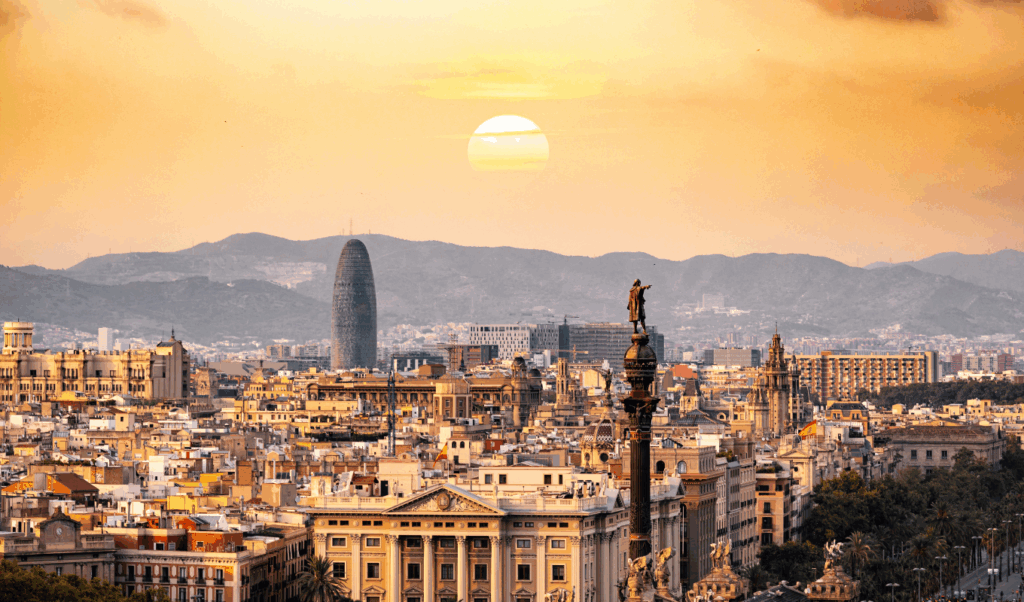
Conclusion
Barcelona is a city where historic charm meets modern flair, offering a blend of experiences that make it one of Europe’s most enticing destinations. From marveling at Gaudí’s architectural masterpieces to enjoying a plate of authentic paella at a lively market, this vibrant Catalan capital has something for everyone.
To make the most of your visit, consider traveling during the shoulder seasons when the weather is pleasant, and the crowds are thinner. While the city’s public transportation system is efficient and easy to use, exploring on foot often leads to delightful surprises tucked away in its hidden corners.
Food lovers will find Barcelona’s culinary offerings irresistible. Whether you’re sampling small bites at a bustling tapas bar or indulging in a meal at a Michelin-starred restaurant, the flavors here are unforgettable. Adjusting to local dining traditions – like having lunch around 2:00 PM and dinner after 9:00 PM – will deepen your appreciation of the city’s food culture.
For international travelers, saving on airfare can make a big difference. Services like Dollar Flight Club offer alerts for discounts of up to 90%, and their Premium+ membership ($99 per year) even includes business class deals and SMS notifications to keep you in the loop.
Barcelona is more than just a destination; it’s an invitation to uncover its many layers. Whether you’re catching the sunrise at Park Güell, getting lost in the charming streets of El Born, or sipping vermouth at a cozy late-night bar, the city offers countless opportunities to create memories. Start planning your trip today and see why Barcelona continues to inspire and enchant millions of visitors every year.
FAQs
What are some tips for visiting Barcelona on a budget, especially for flights and accommodations?
To explore Barcelona without emptying your wallet, start by planning ahead. Booking your flights early and staying flexible with your travel dates can lead to some serious savings. In fact, you might find one-way tickets from the U.S. for under $150. Signing up for flight deal alerts is another smart move to grab discounted fares.
When it comes to accommodations, options like hostels, budget-friendly hotels, or private rentals can keep costs manageable, typically ranging from $90 to $200 per night. Staying just outside the city center is another way to save, and thanks to Barcelona’s reliable public transportation, you’ll still have easy access to all the main attractions. Speaking of saving money, the Barcelona Card is worth considering. It offers free or discounted entry to major sights and unlimited access to public transit, making it a handy tool for exploring the city without overspending.
What’s the best way to visit Gaudí’s famous sites in Barcelona, and should I book tickets in advance?
To make the most of your visit to Gaudí’s iconic landmarks in Barcelona – like Park Güell, Casa Milà, and the Sagrada Família – it’s smart to book your tickets online in advance. Not only does this save you from waiting in long lines, but it also secures your spot, especially during peak tourist seasons.
If you want to dive deeper into Gaudí’s creative genius, think about joining a guided tour or opting for an immersive experience. Taking the time to plan ahead can make your visit to these architectural wonders much smoother and far more enjoyable.
What are the must-try dishes and best places to explore Barcelona’s food scene?
Barcelona’s food scene is a true delight, blending traditional Catalan flavors with the vibrant energy of local markets. A great way to dive in is by visiting iconic spots like La Boqueria or Mercat Sant Antoni, where you’ll find an array of fresh produce, seafood, and regional specialties ready to tempt your taste buds.
Make sure to savor classic dishes such as paella, patatas bravas, pan con tomate, and the indulgent crema catalana for dessert. For a more authentic touch, check out beloved tapas bars like El Quim de la Boqueria or Bar Pinotxo. Don’t leave without trying local favorites like gambes a la planxa (grilled shrimp) and escalivada (roasted vegetables). These dishes and destinations perfectly reflect the rich culinary traditions and lively spirit of Barcelona.

